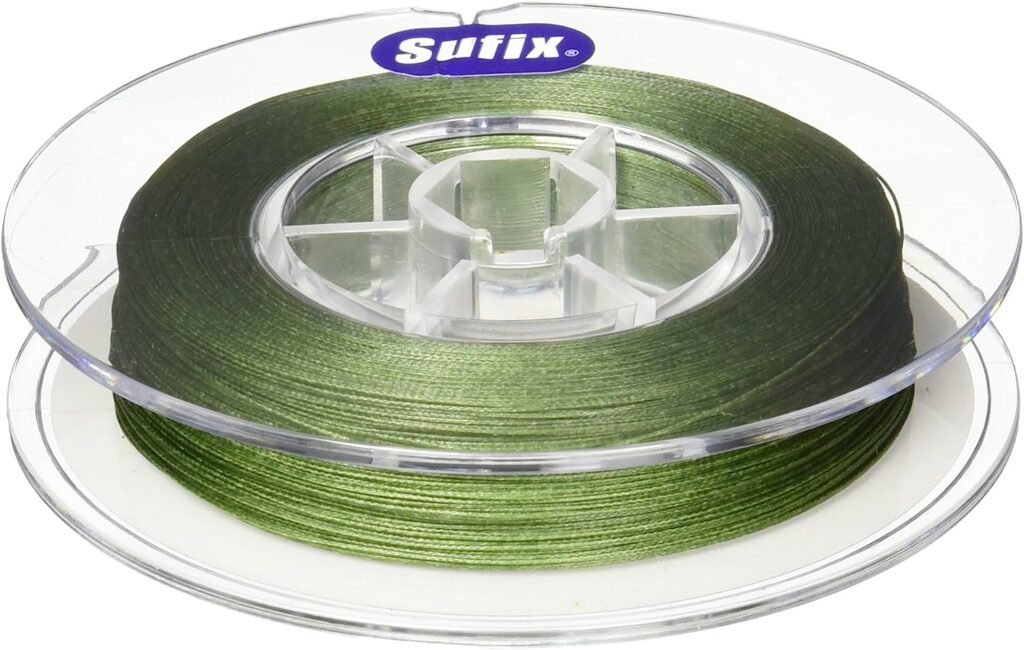The Best Fishing Line for Spinning Reels
Selecting the best fishing line for spinning reels is crucial for several reasons. The fishing line serves as the direct connection between the angler and the fish, bearing the brunt of any tension or force exerted during a battle.

Choosing a line that matches your target species and desired fishing technique is vital to ensure optimal performance and success. Moreover, different types of fishing lines offer distinct advantages and disadvantages that can impact your overall angling experience.
Factors such as line strength, abrasion resistance, visibility underwater, flexibility, stretchability, and sensitivity vary across different lines. Therefore, understanding these characteristics and selecting a suitable fishing line based on your requirements will significantly enhance your chances of landing prized catches while minimizing potential drawbacks.
By carefully considering the type of fishing line best suited for your spinning reel setup, you can optimize casting distance, manage various environmental conditions (including water clarity and temperature), increase bite detection sensitivity, reduce breakage or tangles, and ultimately improve overall angling success rates. The right choice in fishing line can make all the difference between an ordinary day on the water and an extraordinary one filled with memorable catches.
Understanding Fishing Line Types
When it comes to selecting the best fishing line for spinning reels, it is important to understand the characteristics and properties of different line types. The three most common types of fishing lines are monofilament, fluorocarbon, and braided lines. Each type has its own unique set of advantages and disadvantages that can significantly impact your fishing experience.
Monofilament Fishing Line
Monofilament fishing line is a popular choice among anglers due to its versatility and affordability. This type of line is made from a single strand of nylon or other synthetic materials, which gives it a high degree of flexibility. Its flexibility allows for smooth casting and excellent knot strength, making it easier to handle on spinning reels.
In addition to its flexibility, the monofilament line also offers low visibility underwater. This characteristic is essential when targeting wary fish species easily spooked by visible lines.
Monofilament’s near-invisibility helps increase your chances of fooling fish into biting. However, monofilament does have some drawbacks.
It tends to absorb water over time, resulting in decreased sensitivity and reduced strength when wet. It also has a lower abrasion resistance than other line types like fluorocarbon or braided lines.
Fluorocarbon Fishing Line
Fluorocarbon fishing line is known for its remarkable near-invisibility in water. The refractive index of fluorocarbon closely matches that of water, making it almost invisible underwater, even under clear conditions. This property makes fluorocarbon an excellent choice for targeting finicky, exceptionally cautious fish species.
In addition to its invisibility, the fluorocarbon line boasts high abrasion resistance compared to monofilament or braided lines. This makes it suitable for fishing in areas with sharp rocks, logs, or other underwater hazards.
The durability of fluorocarbon ensures you can battle tough fish without worrying about the line breaking. However, the fluorocarbon line does have some downsides.
It tends to be stiffer than monofilament, which can affect casting distance and sensitivity. It also has a higher price point compared to other line types.
Braided Fishing Line
A braided fishing line is made by weaving together multiple strands of synthetic fibers like Spectra or Dyneema. This construction method gives braided lines their characteristic strength and thin diameter. With its exceptional strength-to-diameter ratio, the braided line allows anglers to use higher-pound test lines without sacrificing sensitivity or casting distance.
Furthermore, braided lines exhibit minimal stretch compared to monofilament or fluorocarbon lines. This lack of stretch enhances sensitivity and allows anglers to feel even the subtlest bites.
The increased sensitivity provided by braided lines is especially advantageous when fishing in deep water or areas with heavy cover. Despite these advantages, braided lines do have a few drawbacks.
They tend to be more visible underwater due to their high visibility colors and lack of refraction properties like fluorocarbon. Additionally, their thin diameter can make them prone to tangling if not handled properly.
Factors to Consider for Spinning Reels
Targeted Fish Species: Unveiling the Perfect Match
When selecting the fishing line for your spinning reel, it is crucial to consider the characteristics of your target fish species. The intended catch’s size, behavior, and habitat preferences play a pivotal role in determining the best fishing line. For instance, if you target larger gamefish known for their strength and agility, such as striped bass or musky, you may opt for a stronger and more durable line with a higher pound test rating.
On the other hand, if you plan to go after smaller freshwater species like trout or panfish with delicate mouths, using a lighter line will provide better sensitivity and reduce the risk of tearing through their soft tissues. Understanding your target species’ specific needs will allow you to decide which fishing line is most suitable.
Fishing Conditions: Navigating Through Nature’s Variables
Knowing the prevailing conditions is vital in any fishing endeavor when choosing the appropriate fishing line for your spinning reel. Water clarity, depth, temperature variations, and structure influence how fish perceive their environment and interact with bait.
In clear water conditions with high visibility, using a low-visibility fishing line like fluorocarbon can significantly increase your chances of success by making your presentation appear more natural. Conversely, in murky waters or areas with heavy cover where fish rely more on vibration and scent to locate food sources than sight alone, choosing a braided line with its excellent strength-to-diameter ratio can provide the necessary sensitivity and pulling power to maneuver through obstacles effectively.
Casting Distance: Pushing Limits Beyond Expectation
The choice of fishing lines also plays a crucial role in determining how far you can cast your lure or bait with a spinning reel. Different lines exhibit varying degrees of stiffness and friction, affecting the distance and accuracy of your casts. Monofilament lines, known for their flexibility and smoothness, perform well in casting distance.
Their ability to pass through the guides of the spinning rod effortlessly allows for longer casts with less resistance. Conversely, due to their thinner diameter and lack of stretch, braided lines offer even greater casting distances; however, they may require additional techniques like adding a monofilament or fluorocarbon leader to provide knot strength and reduce visibility.
Line Strength: The Balance between Power and Finesse
Selecting an appropriate pound test rating for your fishing line is essential for targeting different fish species with spinning reels. Line strength refers to the force a line can withstand before breaking under tension. It is crucial to match the pound test rating with the weight range of your target species.
A line that is too light may snap when battling larger fish or maneuvering around underwater debris. At the same time, a too heavy line might be more visible in clear water conditions and potentially spook shy fish away. Understanding the weight range and power of your target species will guide you in choosing a fishing line that balances power and finesse.
By considering these factors – targeted fish species, fishing conditions, casting distance requirements, and line strength – you can decide when selecting the best fishing line for your spinning reel setup. Remember that each factor interplays with others; thus, it’s important to have a holistic approach based on knowledge and experience to maximize success on your next angling escapade.
Recommended Monofilament Lines
When it comes to monofilament fishing lines for spinning reels, a few top-rated options consistently deliver exceptional performance. One of the standout choices is the Berkley Trilene XL.
This line boasts excellent strength and durability, making it suitable for various fishing conditions. Its low-memory design reduces line twists and tangles, ensuring smooth casts and easy handling.
Another highly recommended monofilament line is the Stren Original. Known for its knot strength and abrasion resistance, this line is perfect for anglers targeting aggressive fish species or fishing in areas with rugged underwater structures.
Conclusion
Selecting the right fishing line for spinning reels is crucial in ensuring successful and enjoyable fishing experiences. By understanding the characteristics and benefits of different types of lines like monofilament, fluorocarbon, and braided lines, anglers can make informed decisions based on their specific needs and preferences. While each type has its advantages and disadvantages, some excellent options are available in each category that consistently receive high ratings from experienced anglers.
By considering factors such as target fish species, fishing conditions, casting distance requirements, and line strength needed to handle desired catches, anglers can narrow their choices to find the best fishing line for their spinning reels. Remember that practice makes perfect when using different types of lines on spinning reels.
Experimentation with different brands and testing them in various scenarios will help you develop a personal preference that suits your style of angling. So head out into nature armed with knowledge about the best fishing lines for spinning reels – cast your worries away while casting your line into serene waters!




